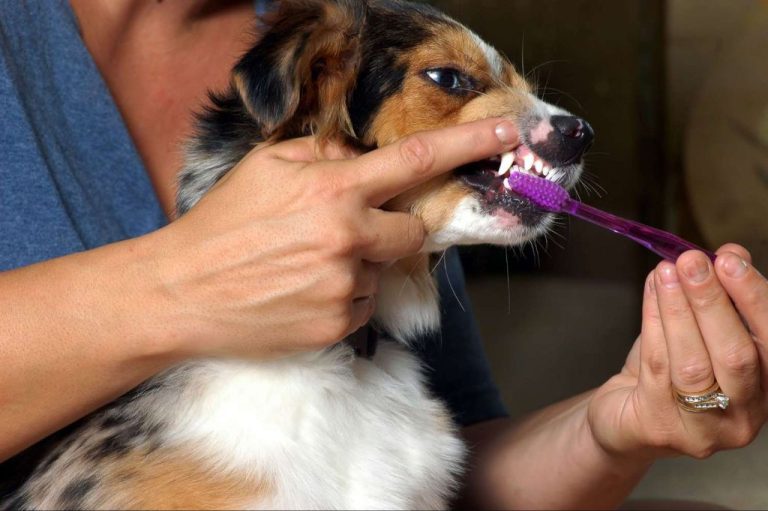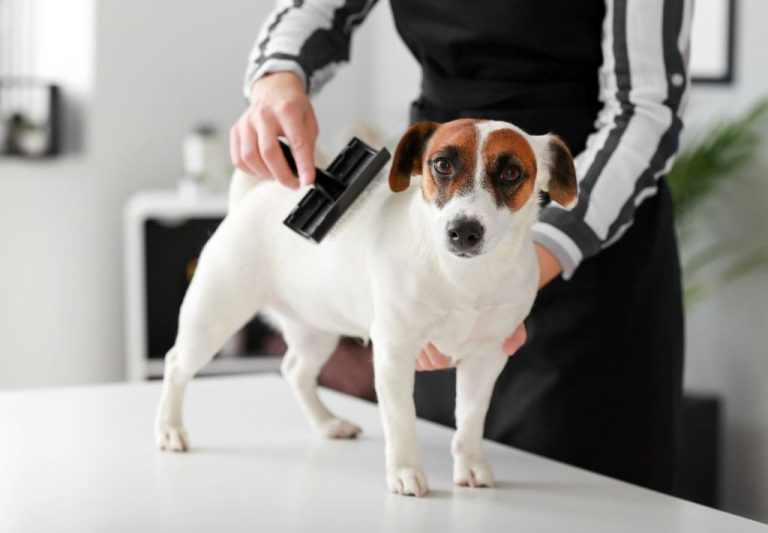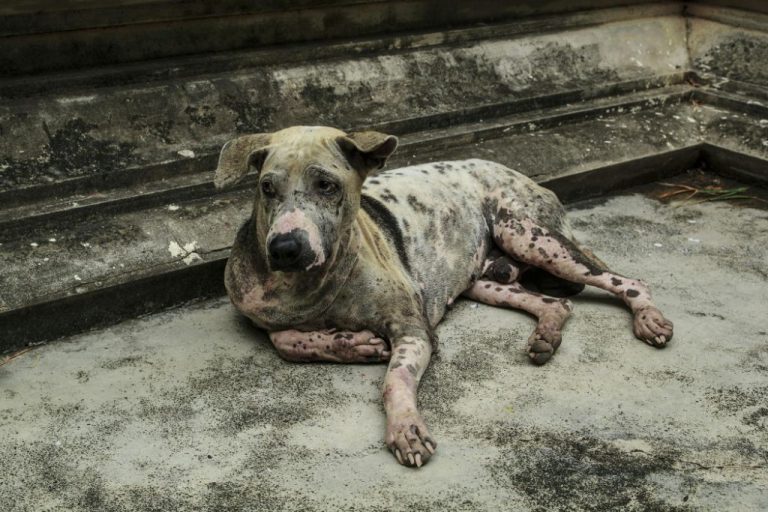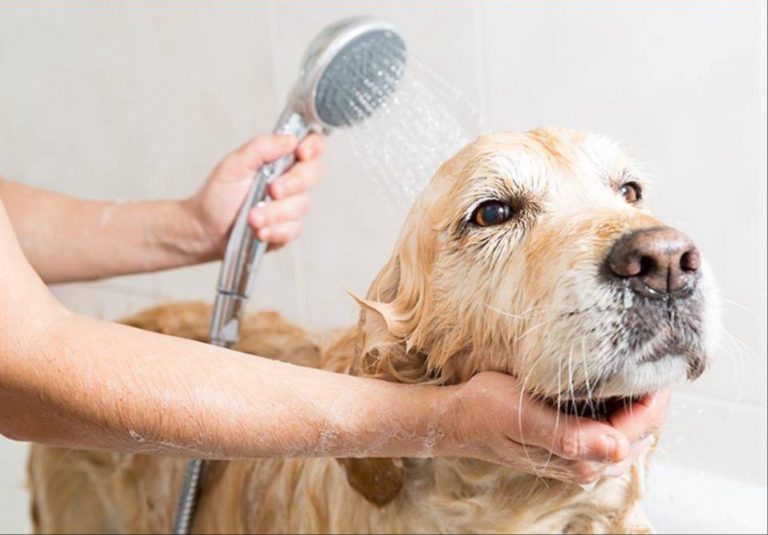Managing Tear Stains: Tips For Brightening Your Dog’S Eyes
What Are Tear Stains?
Tear stains are reddish-brown discolorations below a dog’s eyes caused by the overflow of tears. The porphyrin pigment in tears oxidizes and turns reddish-brown when exposed to air, leading to staining of the fur around the eyes.
Excessive tearing can be caused by a number of factors, including blocked tear ducts, eye irritation or infection, dental problems, allergies, facial structure, and other medical conditions like glaucoma. Certain breeds like Maltese, Shih Tzus, Poodles, and Cocker Spaniels are more prone to tear staining due to their eye shape and structure.
Tear staining is primarily a cosmetic issue, but can sometimes indicate an underlying health problem. Mild staining in susceptible breeds is usually normal, but excessive staining, odor, or changes in staining may warrant a veterinary visit. Keeping the eyes and face clean and treating any medical causes can help reduce staining.
Sources:
https://sentrxanimalcare.com/conditions/common-eye-conditions/tear-staining/
Health Risks of Tear Stains
Tear stains in dogs can indicate some underlying health issues that should be addressed. The reddish-brown stains are often caused by porphyrin, a pigment produced when the body breaks down red blood cells. An excess of porphyrin production can signal irritation or infection (https://www.petmd.com/dog/general-health/dog-tear-stains).
Common health risks associated with tear stains in dogs include:
Infection – Bacteria and yeast can infect the eyes, tear ducts, or skin around the eyes leading to excessive tear production and staining. Conjunctivitis is a common eye infection linked to tear stains (https://www.ahhthespaw.com/dog-tear-stains-an-important-warning-sign/).
Irritation – Allergies, blocked tear ducts, eyelashes rubbing the eye, and other irritants can cause inflammation and excess tears.
Impact on vision – Severe staining around the eyes can potentially impact vision and eye health if left untreated (https://www.fourpaws.com/pets-101/health-and-wellness/dog-tear-stains).
Dietary Changes to Reduce Staining
One of the most effective ways to reduce tear staining in dogs is by making dietary changes. The protein sources and ingredients in your dog’s food can contribute to excess tearing and staining. According to Superior Care Pet, switching to a high-quality hypoallergenic diet is key. Food allergies to ingredients like wheat, corn and soy often cause irritation that leads to tear staining.
Look for a dog food made with quality protein sources like chicken, fish, lamb or venison. Avoid beef, which is high in iron that can worsen stains. It’s also best to avoid artificial colors, flavors and preservatives that may irritate your dog’s eyes. Consider switching to a grain-free or limited ingredient dog food made with natural, hypoallergenic ingredients.
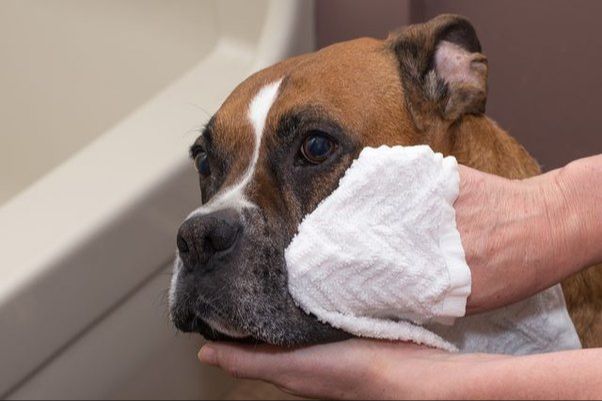
Adding supplements like probiotics, vitamin C or omega fatty acids can also help reduce inflammation that causes excess tearing. Make sure your dog stays well-hydrated since lack of water can concentrate tear stains.
Work with your vet to transition your dog gradually to a new allergy-friendly diet. It may take 6-8 weeks to see improvement in tear staining as your dog’s system adjusts.
Face and Eye Area Hygiene
Keeping the areas around your dog’s eyes clean is an important part of managing tear stains. Here are some tips for a gentle hygiene routine:
Use a soft, damp cloth or cotton pad to gently wipe around the eyes and face. Be very delicate, especially around the eyes themselves. Aim to wipe away any built up discharge, debris, or staining.
Pay close attention to wiping inside skin folds or wrinkles where moisture can collect. Let the area air dry after wiping or gently pat with a clean towel.
Trimming the hair around the eyes can help reduce places where tears collect and stain. Use blunt scissors and carefully trim only minimal amounts of hair around the eyes and face.
Perform eye and face hygiene daily if possible, or at minimum a few times per week. Consistency is key for managing tear buildup. Be patient and gentle, never scrubbing or irritating the sensitive skin.
Products like saline eye drops or wipes specifically for dogs can help loosen debris and make hygiene easier. Consult your veterinarian first before using any new eye products. https://www.akc.org/expert-advice/health/tear-stains-prevent-and-clean/
With a gentle routine focused on keeping the area clean, you can help reduce stains and keep your dog comfortable.
Topical Treatments
There are several topical treatments available over-the-counter and through your veterinarian to help remove tear stains and prevent future stains from forming.
Common OTC options include gels, wipes, powders, and creams that contain active ingredients like hydrogen peroxide or tylosin to reduce bacterial growth. According to The Spruce Pets, popular OTC tear stain removers include Angels’ Eyes Gentle Tear Stain Wipes, TropiClean Tear Stain Remover, and Squishface Tear Stain Paste.
Your vet may prescribe antibiotic ointments containing tylosin or tobramycin. These are applied topically 1-2 times per day. According to Eye Envy, tylosin-based products like Eye Envy Tear Stain Remover work to control bacterial growth that contributes to stains.
When applying topical treatments, be sure to gently wipe the stained area, avoiding your dog’s eyes. Let the product sit for a few minutes before wiping away any residue. Apply morning and night for best results.
When to See the Vet
Tear staining is often benign, but it’s important to be aware of signs that may indicate an underlying health issue requiring veterinary attention. Some signs to watch for include:
Signs of infection: If the stained area looks irritated, inflamed, or swollen, it could indicate a bacterial or yeast infection, especially if there is a foul odor present. An infection requires prescription medication to clear it up.
Eye injuries or ulcers: If your dog’s eye seems painful, swollen, or cloudy, it could signal an eye injury like a scratched cornea or ulcer that needs treatment. Left untreated, eye issues can worsen.
Blocked tear ducts: Excessive tearing and staining can be caused by obstructed tear ducts preventing drainage. This requires flushing or surgery to open the drainage pathways.
Allergies or immune disorders: Chronic staining may result from allergies, autoimmune disorders, or other systemic health conditions. Identifying and managing the underlying cause is key.
Signs of illness: Sudden increased staining can signal illness like a respiratory infection, dental disease, or irritation from a foreign object stuck in the eye or nose. Diagnostic tests may be needed.
If your dog has persistent staining that doesn’t improve with cleaning, develops signs of irritation or infection, or exhibits other concerning symptoms, see your vet for an exam. Timely treatment of health issues minimizes complications.
Preventing Recurrence
To prevent tear stains from recurring, it’s important to focus on ongoing care and addressing any underlying issues. Some tips include:
Keeping the face clean and dry daily to prevent buildup. Gently wipe around eyes with a damp cloth and use a dog-safe tear stain remover if needed.
Checking for underlying health issues with your veterinarian. Allergies, eye problems, dental disease, and other conditions can contribute to excessive tearing.
Changing to stainless steel, ceramic or glass food and water bowls. Plastic bowls can harbor bacteria.
Adding omega fatty acid supplements or foods with omega-3s. These can reduce inflammation that leads to tearing.
Using filtered or bottled water instead of tap water. Tap water minerals and chemicals can irritate eyes.
Monitoring any reactions to food or environmental allergens. Eliminating allergens reduces irritation and watery eyes.
Considering prescription tear stain products if over-the-counter options fail. But always consult your vet first.
Being patient. It can take weeks or months to successfully address causes and see improvement.
Living with Stains
While tear stains can be frustrating for pet owners, it’s important to remember that they are mainly a cosmetic issue and don’t hurt your dog. If stains persist despite your best efforts, focus on keeping your dog comfortable and easing any irritation in the stained areas.
Gently wipe any buildup from your dog’s eyes daily using a warm, wet cloth. This will help prevent crusting and matting of the fur. Using a very mild, pet-safe facial scrub can help loosen stubborn stains. Rinse thoroughly after cleaning.
Bathe your dog regularly using an oatmeal-based or moisturizing shampoo to soothe the skin. Avoid getting shampoo directly in your dog’s eyes. Use a hypoallergenic moisturizing conditioner to prevent dryness and irritation.
Clip overstained fur around the eyes to improve your dog’s appearance and comfort. Never shave completely, as the fur protects your dog’s sensitive skin. Go slowly and use rounded tip scissors to avoid nicks.
While unsightly, mild stains themselves don’t require veterinary intervention. Focus on managing any eye irritation and keeping your dog comfortable. With a little patience and care, you and your dog can live happily with stains.
Appearance Options
While addressing the underlying cause of tear staining is important, many dog owners also want to improve the appearance of existing stains. There are several cosmetic options that can help brighten the fur around your dog’s eyes.
Trimming
Regularly trimming the fur around the eyes can help reduce the visible staining. Use rounded tip scissors to carefully trim the fur where tears accumulate and stain. Be very gentle and don’t trim too close to avoid irritating the skin or eyes. Trimming every few weeks can keep the area looking tidy.
Whitening Shampoos
There are several tear stain whitening shampoos on the market that can help brighten stained fur. These shampoos often contain ingredients like optical brighteners and whitening agents. Use them as part of your regular grooming routine by focusing on stained areas. Rinse thoroughly after use. Whitening shampoos can help remove surface stains but results are temporary.
Dyes and Makeup
For significant staining, some owners opt to use pet-safe dyes or makeup to camouflage the stains. There are tear stain wipes, gels, and powders formulated just for dogs. Follow product instructions carefully. Most will need to be reapplied regularly as the fur grows out. Talk to your groomer about semipermanent dye options if stains are very stubborn.
While cosmetic options don’t treat the cause, they can greatly improve your dog’s appearance while you work to address any underlying issues. Always use products formulated specifically for pets.
When to Be Concerned
While mild staining may be merely a cosmetic issue, significant staining or discharge could indicate an underlying health problem that requires veterinary attention. Some signs that warrant a vet visit include:
– Excessive tearing or discharge that persists despite implementing tips for stain reduction
– Squinting, redness, swelling, or irritation of the eyes
– Crusty buildup around the eyes
– Loss of pigment or hair around the eyes
– Swollen or inflamed third eyelid
– Eye wounds or injury
– Sudden increase in staining
– Discomfort like pawing at the eyes
Serious issues like glaucoma, corneal ulcers, infection, or blocked tear ducts require prompt veterinary care. It’s also important to have the eyes evaluated if the stains persist despite addressing potential causes. While managing tear staining can take some trial and error, don’t hesitate to involve your vet if problems worsen or you notice anything abnormal with your dog’s eyes.

